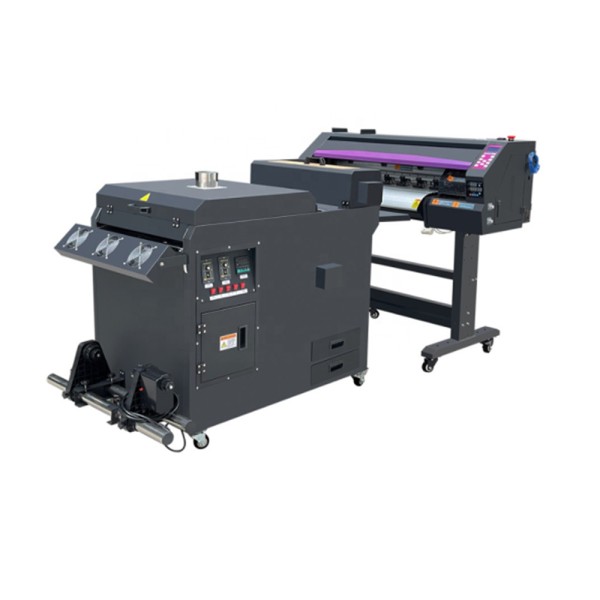Ultimate Overview to DTF Printing Techniques for Magnificent Textile Layouts
Getting started on the journey of understanding DTF printing strategies can open a globe of possibilities for creating aesthetically captivating fabric styles. As the fabric market proceeds to advance, remaining ahead of the contour with cutting-edge printing approaches is crucial. In this overview, we will certainly check out the elaborate details of DTF printing, from realizing the essential essentials to unraveling progressed color methods that can boost your styles to new elevations. Stay tuned as we dive into the nuances of selecting the ideal materials, developing the printing procedure, and conquering usual difficulties to achieve spectacular outcomes.
Understanding DTF Printing Essentials
DTF printing, a process that includes transferring styles from a special movie to textiles using warmth and stress, creates the foundation of textile printing strategies. The initial step in DTF printing entails creating or picking a layout that will certainly be printed onto the textile.
The final result is a magnificent, lasting fabric design that is cleanable, flexible, and resistant to fading. Generally, understanding the basics of DTF printing is necessary for mastering this modern-day textile printing technique.
Choosing the Right Fabric Products
Having actually established the fundamental concepts of DTF printing techniques for fabric designs, the next essential factor to consider exists in selecting the proper fabric materials to match this ingenious process properly. Additionally, the stretchability of these products can accommodate the heat transfer process included in DTF printing without distorting the layout. By selecting the appropriate textile materials, developers can take full advantage of the possibility of DTF printing to develop spectacular and lasting fabric styles.

Mastering the Printing Refine
To excel in DTF printing methods for fabric layouts, mastering the printing procedure is crucial for achieving consistent and top notch results. The temperature, stress, and period of warm application must be very carefully controlled to guarantee proper adhesion of the layout to the textile. By developing each of these actions in the printing process, developers can continually create sturdy and stunning textile styles with DTF printing strategies.
Enhancing Designs With Color Techniques

Additionally, try out color gradients can bring a sense of activity and fluidness to the design. By blending shades flawlessly, a slope impact can be accomplished, adding a contemporary and dynamic touch to the fabric style. Furthermore, utilizing color blocking methods can create striking and strong visuals by comparing different strong shades in distinctive sections of the style.
Moreover, incorporating metallic or neon shades can offer a one-of-a-kind and attractive component to the fabric layout, making it stand apart and emanate a feeling of vibrancy. When purposefully applied, these shade methods can raise the general aesthetic appeal of fabric designs, making them much more exciting and memorable.
Troubleshooting Common DTF Printing Issues
After checking out numerous color strategies to enhance fabric layouts, it Get More Information is vital to attend to usual DTF printing issues that may arise throughout the manufacturing procedure. One usual concern is bad adhesion, which can result from improper treating temperatures or times. To solve this trouble, make certain that the healing settings are accurate which the glue utilized appropriates for the details material being published on. An additional regular challenge is color incongruities, where colors may show up in different ways than expected. This can be triggered by inaccurate shade profiles or setups in the printing software. To tackle this, verify the shade setups and accounts to guarantee they match the desired layout. Furthermore, concerns with picture clarity and intensity can occur due to low-resolution images or improper printing strategies. To address this, constantly make use of top notch pictures and readjust the printing settings for ideal quality. By being aware of these typical problems and executing the needed troubleshooting steps, you can boost the general top quality of your DTF published textile styles.
Final Thought
In final thought, mastering DTF printing methods is crucial for creating magnificent textile layouts. With practice and focus to information, one can develop stunning and distinct fabric styles using DTF printing techniques.
)))))
DTF printing, a process that involves moving styles from a special movie to textiles using warmth and stress, develops the structure of textile printing techniques.Having established the fundamental concepts of DTF printing techniques for fabric designs, the next critical factor to consider lies in picking the appropriate fabric materials to complement this ingenious process effectively. By picking the appropriate fabric products, designers can take full advantage of the capacity see this page of DTF printing to produce long-lasting and spectacular fabric styles.
To stand out in DTF printing strategies for textile layouts, grasping the printing process is essential for achieving consistent and premium results. DTF Printing. By refining each of these steps in the printing process, designers can regularly create resilient and spectacular fabric designs with DTF printing strategies